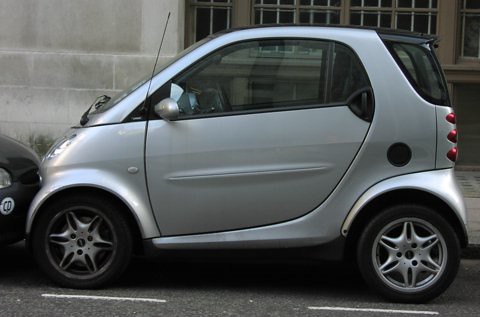
The allure of a new vehicle is often born from the fantastical realm of concept cars. These extraordinary machines, frequently showcased at auto shows, serve as more than just eye candy; they are the industry’s testing ground for groundbreaking designs, revolutionary technologies, and audacious engineering solutions. They offer a tantalizing glimpse into what the future of automotive travel could hold, pushing the boundaries of what we imagine is possible.
Yet, for every concept that inspires a production model, countless others remain confined to design studios, test tracks, and the annals of automotive history. These unreleased prototypes, though never gracing the streets, hold a special place in the hearts of car enthusiasts. Their stories are a testament to human ingenuity, chronicling visions that were, for various reasons—be it financial struggles, technological challenges, or simply not fitting a brand’s future direction—never fully realized.
In this in-depth exploration, we embark on a journey through the captivating world of these forgotten marvels. We will uncover the detailed narratives behind 14 of the most fascinating supercar prototypes and visionary concepts that had the potential to redefine the automotive world, but ultimately remained blueprints and one-off creations. Join us as we examine their unique features, the incredible innovation they represented, and the compelling reasons why they never made it past the drawing board.
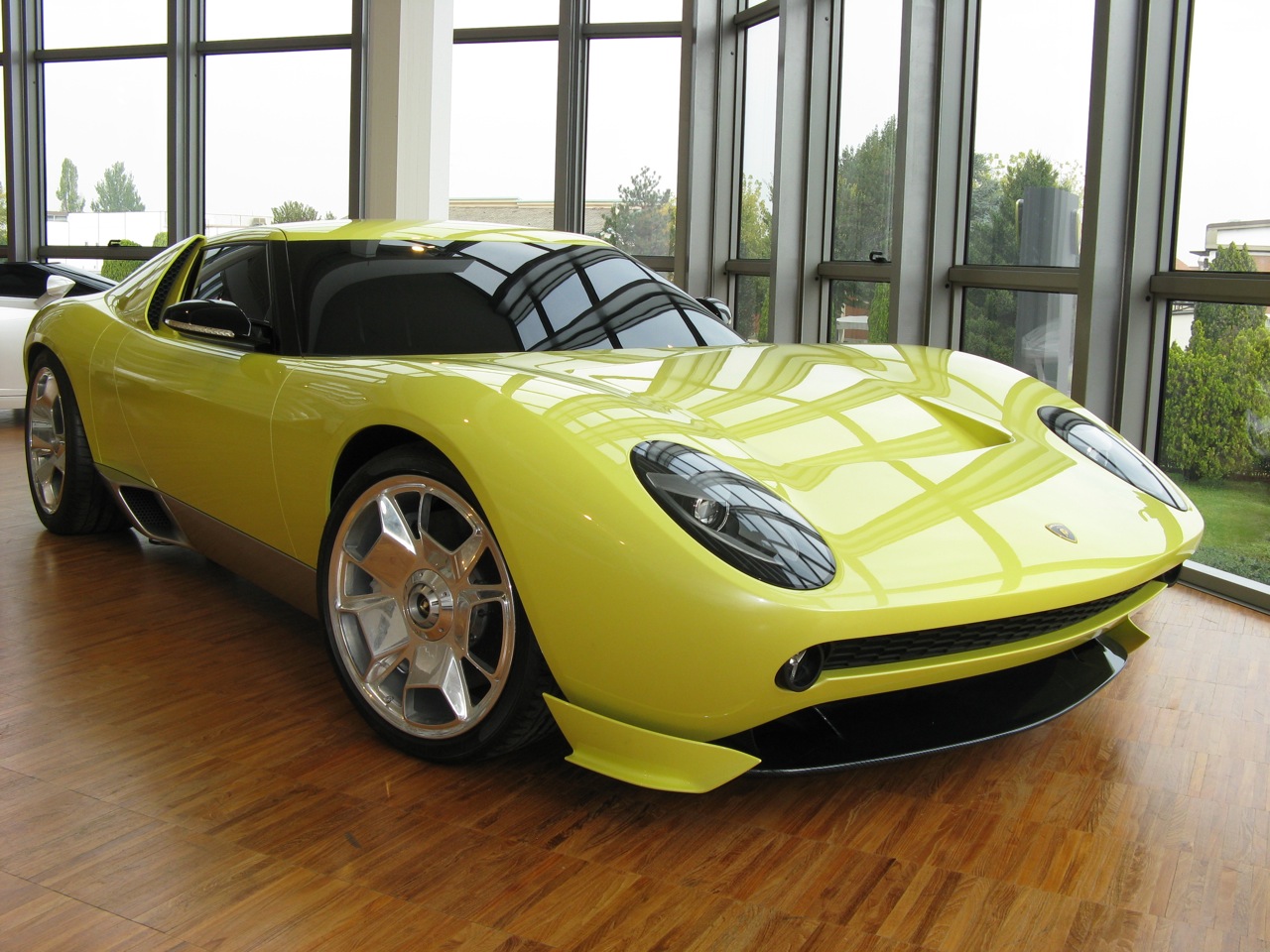
1. **Lamborghini Miura Concept**
When Lamborghini marked its 40th anniversary in 2006, the brand chose to celebrate this significant milestone by unveiling the Miura concept. This move instantly ignited a fervent hope among enthusiasts that the iconic Miura, a car that had made monumental waves in the automotive world during the 1960s, was destined for a glorious return to production. The concept was a direct nod to its legendary predecessor, embodying a sleek and futuristic design that left many convinced Lamborghini was poised to reintroduce a new production model.
However, this wave of excitement was soon tempered by a deliberate air of mystery. Walter de Silva, then Lamborghini’s chief designer, notably refused to share any technical details about the Miura concept. This calculated silence, rather than dampening interest, sparked intense speculation and a flurry of rumors within the automotive community, fueling debates about whether the concept truly was intended for production or merely a design exercise. Car fans eagerly awaited more concrete information, yet it became increasingly apparent that Lamborghini harbored no plans to transform this stunning vision into a tangible reality for the masses.
The situation was eventually clarified in 2006 by Stephan Winkleman, who was then the CEO of Lamborghini. He explicitly stated that the Miura concept had been created purely as a celebratory gesture, a tribute to the brand’s rich and storied history. Rather than signaling a revival of an old design, Lamborghini’s intention was to honor its enduring legacy and the Miura’s indelible place in automotive history. The CEO firmly emphasized that the company was not interested in producing cars based on historical designs, a clear directive for its future trajectory.
Consequently, the Miura concept, despite its breathtaking aesthetics and immense potential to reignite a segment, remained a singular, one-off creation. Lamborghini made a conscious decision not to pursue its production, cementing its status as a beautiful, evocative tribute to the past. It stands as a powerful reminder of how the original Miura’s legacy continues to subtly influence the design language and ethos of Lamborghini’s contemporary supercars.
Read more about: Strategic Investments: The Classic Cars Skyrocketing in Value That Savvy Collectors Are Watching
2. **BMW M1 Homage Concept**
The BMW M1 Homage emerged as a deeply reverential tribute to the original BMW M1, a vehicle born from the ambitious goal of competing at the prestigious Le Mans race. While the original M1 was lauded for its innovative design and formidable performance, it faced significant hurdles with reliability issues and prohibitive pricing. These challenges ultimately contributed to disappointing sales figures, even though the car was produced in strictly limited numbers, making it a rare sight on the roads.
Despite its initial struggles in the market, the original M1 gradually cultivated a devoted cult following, with its legacy steadily expanding within the global automotive landscape. Recognizing this enduring reverence, BMW chose to honor this iconic car by introducing the M1 Homage concept. This modern interpretation was unveiled in Italy, captivating audiences with a design that masterfully blended retro elements with an aggressive, cutting-edge aesthetic. It was an instant hit, resonating deeply with car enthusiasts worldwide.
BMW presented the M1 Homage with the strategic objective of gauging public and critical feedback. The aim was to assess reactions to its distinctive retro touches and to evaluate its potential viability as a future production model. The concept car garnered widespread attention for its striking design, drawing numerous comparisons not only to the revered original M1 but also to BMW’s more contemporary and advanced models, underscoring its broad appeal across different eras of automotive design.
Nevertheless, despite the overwhelmingly positive reviews and the significant interest that swirled around the concept, BMW ultimately made it clear that the M1 Homage would not proceed into production. The company unequivocally stated that the car was intended solely to celebrate the rich legacy of the original M1 and to vividly highlight the continuous evolution of the brand’s design philosophy. This pivotal decision meant that the M1 Homage remained a unique, one-off creation, never destined to grace the roads as a mass-produced vehicle, a fate shared by many visionary concepts.
The M1 Homage concept, therefore, endures as an important chapter in BMW’s illustrious history. It serves as a powerful testament to the company’s profound respect for its past achievements while simultaneously demonstrating its relentless drive to push the boundaries of future designs. It is a poignant reminder of the M1’s iconic status among performance cars, a legacy that continues to inspire and captivate.
Read more about: The Real Cost of Speed: 14 Sports Cars & What Financial Experts REALLY Think About Your Investment

3. **1951 General Motors Le Sabre**
The 1951 General Motors Le Sabre stands as a truly stunning concept car, born under the visionary leadership of the legendary Harley Earl. It is widely regarded as one of his most beautiful and influential designs, yet, with a touch of automotive tragedy, it never achieved mass production. The car was a stylistic marvel, featuring prominent tail fins, a characteristic that was even more exaggerated and eye-catching on the Le Sabre than on the earlier 1948 Cadillac, where this groundbreaking design element was initially introduced.
Beyond its striking aesthetic, the Le Sabre also showcased an array of advanced technologies that were remarkably ahead of its time. One of its most notable and innovative features was the rear-mounted transmission, a pioneering engineering solution in the automotive world. Furthermore, the car boasted heated seats, a luxury amenity that was virtually unheard of in its era, and a robust 12-volt electrical system that powered the vehicle’s various sophisticated functions. These features collectively positioned the Le Sabre as an impressive and compelling showcase of General Motors’ vast potential for innovation.
Despite all its forward-thinking technology and undeniably eye-catching design, General Motors ultimately made the decision not to proceed with the production of the 1951 Le Sabre. The concept car, for all its technical prowess and sheer beauty, never transcended its status as a singular, one-off creation. This decision meant that a car brimming with revolutionary ideas and luxurious appointments remained a unique artifact, never intended for widespread public consumption or daily road use.
Today, the Le Sabre is reverently remembered as a powerful symbol of what could have been. It embodies an extraordinary combination of style and innovation that was, by all accounts, years ahead of its contemporary automotive landscape. Though it never reached the bustling roads, the Le Sabre continues to hold an important place in automotive history, representing the bold, imaginative designs that have profoundly shaped and influenced the car industry’s trajectory.
It serves as a poignant reminder of how truly visionary ideas, despite their brilliance, sometimes never get the full opportunity to be realized, leaving behind only a potent and inspiring legacy for future generations of designers and engineers.
Car Model Information: 2023 Nissan Rogue SV
Categories: 1950s cars, All articles with unsourced statements, Articles with short description, Articles with unsourced statements from February 2011, Articles with unsourced statements from July 2025
Summary: The General Motors Le Sabre is a 1951 concept car, and possibly the most important show car of the 1950s. The brainchild of General Motors Art Department head Harley Earl, it introduced aircraft-inspired design elements such as the wrap-around windshield and tail fins, which became common on automotive designs during the second half of the decade.
The Le Sabre is owned by the GM Heritage Center, and still occasionally appears at car shows.
This was GM’s first use of the Le Sabre name, which would be later adopted by Buick for the 1959 Buick LeSabre.
Get more information about: General Motors Le Sabre
Buying a high-performing used car >>>
Brand: General Motors Model: Le Sabre
Price: $21,998 Mileage: 47,048 mi.
Read more about: Beyond the Legends: 15 Affordable Classic Pontiacs Every Enthusiast Should Consider for Their Garage
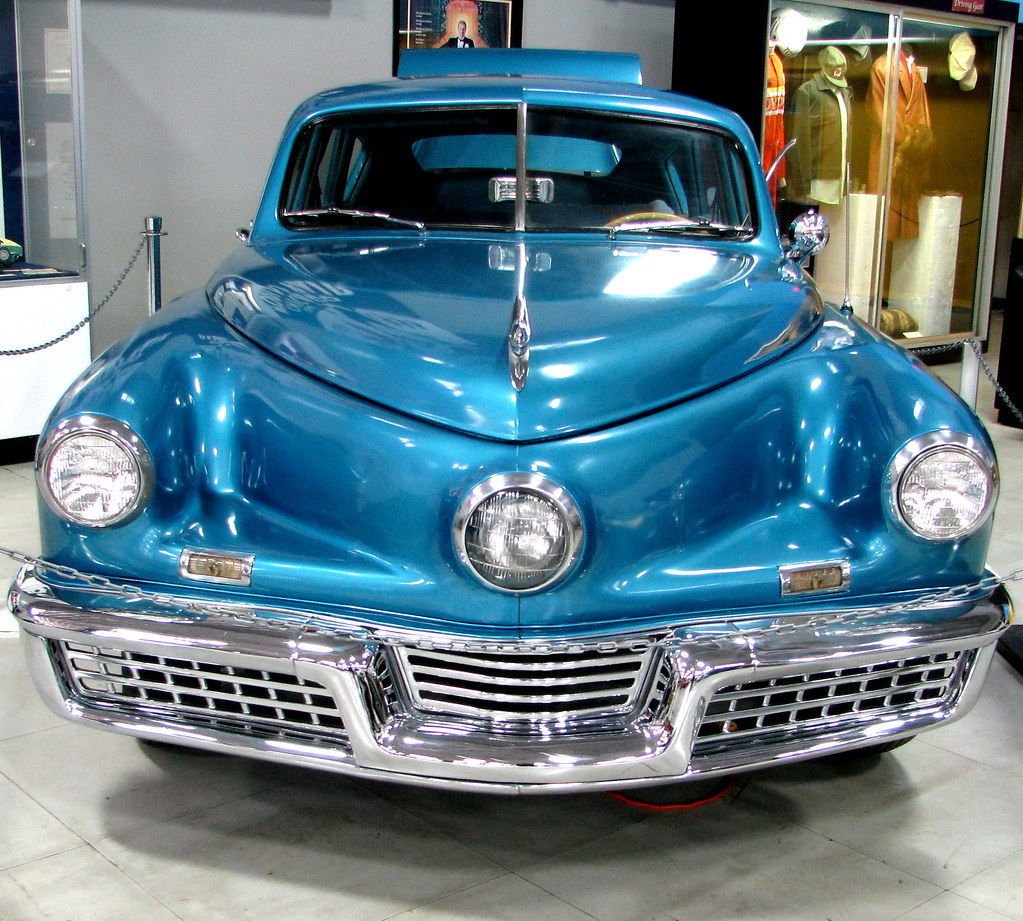
4. **Tucker 48**
The Tucker 48 was a truly groundbreaking concept car, a testament to the audacious vision of Preston Tucker, a former police officer who transformed into an entrepreneurial automotive pioneer. Named to honor both its innovative creator and its production year, 1948, the Tucker 48 was meticulously designed with an unwavering focus on safety and revolutionary innovation. Despite its impressive and forward-thinking features, the project was ultimately plagued by a series of financial and legal challenges that regrettably prevented it from reaching its intended mass production.
One of the most distinctive and unique aspects of the Tucker 48 was its pioneering perimeter frame. This robust frame was engineered specifically to protect the car’s occupants in the dire event of a crash, adding substantial structural strength and making the vehicle significantly more resilient to accidents. Another groundbreaking safety feature was its directional third headlight, prominently positioned in the middle of the car. This innovative light was designed to illuminate the road around corners when the car was steered at angles greater than 10 degrees, dramatically improving visibility and safety during nighttime driving.
In addition to the aforementioned third headlight, the Tucker 48 integrated several other remarkably advanced safety features for its time. The steering box, for instance, was strategically positioned behind the front axle, a design choice intended to offer crucial extra protection to the driver in the event of a front-end collision. Furthermore, the car’s windshield was crafted to be shatterproof and uniquely designed to pop out during a crash, an ingenious mechanism aimed at further ensuring the safety of its precious passengers.
Despite its revolutionary design and an impressive suite of safety features, the Tucker 48 encountered insurmountable financial and legal obstacles that tragically derailed its mass production aspirations. Ultimately, only 50 models of this visionary car were ever constructed, and the ambitious project sadly came to an abrupt end without ever making it into showrooms across the nation. This outcome left a profound mark on automotive history, a testament to what could have been.
The Tucker 48 remains an iconic and enduring example of automotive innovation and advanced safety thinking, vividly showcasing the monumental potential that could have been unleashed if the car had achieved full production. Today, it is rightfully remembered as a pioneering concept in car history, a vehicle that was undeniably ahead of its time in both its ambitious design and its intricate technology, continually inspiring future advancements.
Read more about: Gearhead Dreams: 15 Iconic Defunct Car Brands We Desperately Want Back on the Road

5. **1973 Chevrolet Aerovette**
The 1973 Chevrolet Aerovette represented an exceptionally ambitious concept car, conceived with the bold intention of revolutionizing the design of the iconic Corvette. Its design aimed to replace the traditional Corvette layout with a more modern, radically futuristic configuration. One of its most singular and innovative features was the planned integration of a rotary engine, which General Motors intended to position in a pioneering mid-engine setup, a significant departure from the brand’s established norms.
The Aerovette also distinguished itself with a remarkably sleek and impeccably clean design. Unlike many other vehicles of its era, it showcased perfectly fitted aerodynamic elements, such as distinctive split windows and meticulously crafted windshield halves, all presented without any distracting graphics or superfluous lines. These deliberate design choices imbued the Aerovette with a distinctly futuristic appearance, showcasing advanced thinking in both aesthetic appeal and functional performance, pushing the boundaries of what a Corvette could be.
Despite its myriad of forward-thinking features, the Aerovette never managed to progress to mass production. Although the project had initially received the green light, a change in leadership brought a new team to oversee its development. This new team held a strong preference for the traditional front-engine, rear-drive layout that had long defined the Corvette’s identity. As a direct consequence of this shift in corporate direction and design philosophy, the project was unceremoniously shelved, and the Aerovette regrettably missed its opportunity to fundamentally alter Corvette design forever.
Even though the Chevrolet Aerovette never made it to the consumer market, it remains an undeniably important artifact within automotive history. Its bold design and innovative application of technology cemented its status as a powerful symbol of what could have been—a thoroughly modern Corvette that was poised to push the very boundaries of automotive engineering. Today, the Aerovette is remembered as one of the most iconic concept cars that never transitioned from the drawing board to the production line, a testament to unfulfilled potential.
Read more about: Unveiling the Ghosts of Automotive Futures: The Secret Histories of 10 Revolutionary Cars That Never Were

6. **Cadillac Escala**
The Cadillac Escala emerged as a highly promising concept car, specifically envisioned to assume the mantle of the brand’s next flagship model. It was conceived as a direct successor to the CT6, a model that had already garnered considerable attention for its blend of luxury and performance. The Escala distinguished itself immediately with its impressive physical stature, measuring approximately 6 inches longer than the CT6, thereby commanding an even more imposing and authoritative presence on the road.
Beneath its elegant hood, the Cadillac Escala was designed to house a formidable twin-turbo 4.2 L V8 engine, promising a potent combination of both exhilarating performance and refined luxury. This powerful engine was intended to be a major selling point for the car, skillfully blending raw power with the sophisticated refinement that Cadillac had long been celebrated for. The Escala’s sleek design and its array of advanced features positioned it as a strong and compelling contender within the fiercely competitive luxury car market, signaling a bold new direction for the brand.
At the time of its unveiling, Cadillac’s president expressed profound optimism regarding the Escala, hailing it as “the representation of the company’s return to the pinnacle of premium.” The car was widely perceived as a significant stride forward in Cadillac’s relentless pursuit of automotive excellence, vividly showcasing the brand’s capacity to seamlessly integrate cutting-edge technology with an inherently elegant and timeless design. The buzz around its potential was palpable, suggesting a bright future.
However, despite the overwhelmingly positive feedback and the considerable promise that the Escala undeniably held, Cadillac ultimately made the difficult decision to abandon the production of the car. Instead of focusing resources on bringing the Escala to market, the company strategically chose to reallocate its attention and investments toward the rapidly expanding crossover SUV segment, which was increasingly viewed as the undeniable future of the automotive market. This pivotal decision left the Escala as merely a concept, never destined to reach the production line, a poignant reminder of shifting market demands.
Thus, the Cadillac Escala remains a powerful example of what could have been. Its harmonious combination of imposing size, distinctive style, and robust performance made it a natural candidate for a flagship model for the brand. Its eventual cancellation, however, starkly underscored a significant shift toward a new era of vehicles that prioritized different, evolving market demands, moving away from traditional luxury sedans.
Read more about: Crossover Suspension Reliability Report: 5 Models Built to Last, 5 That Will Cost You

7. **2013 Nissan IDX Nismo Concept**
Nissan made a significant splash in the automotive world when they unveiled two IDX cars at the highly anticipated 2013 Detroit Auto Show. Among these, the Nissan IDX Nismo concept captivated the most attention and generated widespread excitement. The car’s design masterfully incorporated retro lines that were distinctly reminiscent of the iconic Datsun 510, featuring a boxy yet undeniably sporty appearance. This concept quickly captured the hearts and imaginations of sports car enthusiasts, yearning for a blend of nostalgia and modern performance.
However, the IDX Nismo was far more than just a visually appealing concept; it was also engineered for spirited performance. Under its hood, it was powered by a compact but potent 1.6 L engine. This engine endowed the car with impressive performance capabilities, perfectly complementing its sporty, aggressively styled design. The vehicle’s compact dimensions and an array of sporty features made it an exceptionally appealing option for driving enthusiasts who longed for a small, rear-wheel-drive car that delivered an engaging driving experience.
Following the tremendous excitement generated at the Detroit Auto Show, Nissan initially maintained a positive stance regarding the potential production of the IDX Nismo. There were strong and encouraging indications that the car could, at some point, eventually make its way to the production line. However, as time progressed and market dynamics shifted, the company’s position began to evolve. Nissan started exploring various options for restyling the car, a development that, paradoxically, only led to further confusion and uncertainty about its ultimate future.
Ultimately, Nissan officially stated that they had not found a commercially viable way to produce a small, rear-wheel-drive sports car like the IDX Nismo. The car’s development faced several formidable challenges, including significant concerns about its commercial profitability in a competitive market. It became undeniably clear that, despite its initial promise and widespread appeal, the IDX Nismo would not be making its journey to the production line, a decision that disappointed many.
The Nissan IDX Nismo concept, therefore, remains a cherished dream for countless car enthusiasts. It represents a powerful fusion of retro design sensibilities and modern performance aspirations that, regrettably, never reached the bustling streets. While it undeniably stirred a great deal of excitement at the time of its unveiling, it now serves as a poignant reminder of how even the most promising and beloved concepts sometimes fail to progress beyond the drawing board, leaving an enduring mark of ‘what could have been’.
Car Model Information: 2023 Nissan Rogue SV
Name: Nissan IDx
Caption: Tokyo Motor Show
Manufacturer: Nissan
Aka: Nissan IDx Freeflow
Production: 2013 (concept car)
Designer: David Beasley / Nissan Design Europe + Global Nissan Design Center
BodyStyle: coupé
Layout: Front-engine RWD
Related: NISMO
Engine: Nissan MR engine#MR16DDT,Turbocharger
Transmission: 6-speed manual , CVT
Length: 13.5 ft
Abbr: on
Disp: flip
Width: 5.6 ft
Height: 4.3 ft
Weight: 2900 lb
Predecessor: Datsun 510
Sp: us
Categories: Articles with short description, Nissan concept vehicles, Retro-style automobiles, Short description matches Wikidata
Summary: The Nissan IDx is a concept car introduced at the 2013 Tokyo Motor Show by Nissan. It is supposedly inspired by the Datsun 510. The IDx is Nissan’s answer to the “RWD tuner craze” that is ongoing and a direct competitor to the Hyundai Genesis coupe & Scion FRS/Subaru BRZ. The IDx is aimed at young buyers and racing gamers alike. A few quirks the car has that might not make production are the “side view mirrors” that are designed to be cameras rather than traditional mirrors as well as the side-exit exhaust. There is a possibility that Nissan is building more IDx concepts because there are numbers (003 and 004) instead of 001 and 002 on each of the concepts. With Nissan’s looming decision to discontinue several current models such as the Quest, Xterra, Cube and possibly the Juke there is expected room in Nissan’s lineup for a new entry-level sports car.
Get more information about: Nissan IDx
Buying a high-performing used car >>>
Brand: Nissan Model: IDX Nismo Concept
Price: $21,998 Mileage: 47,048 mi.
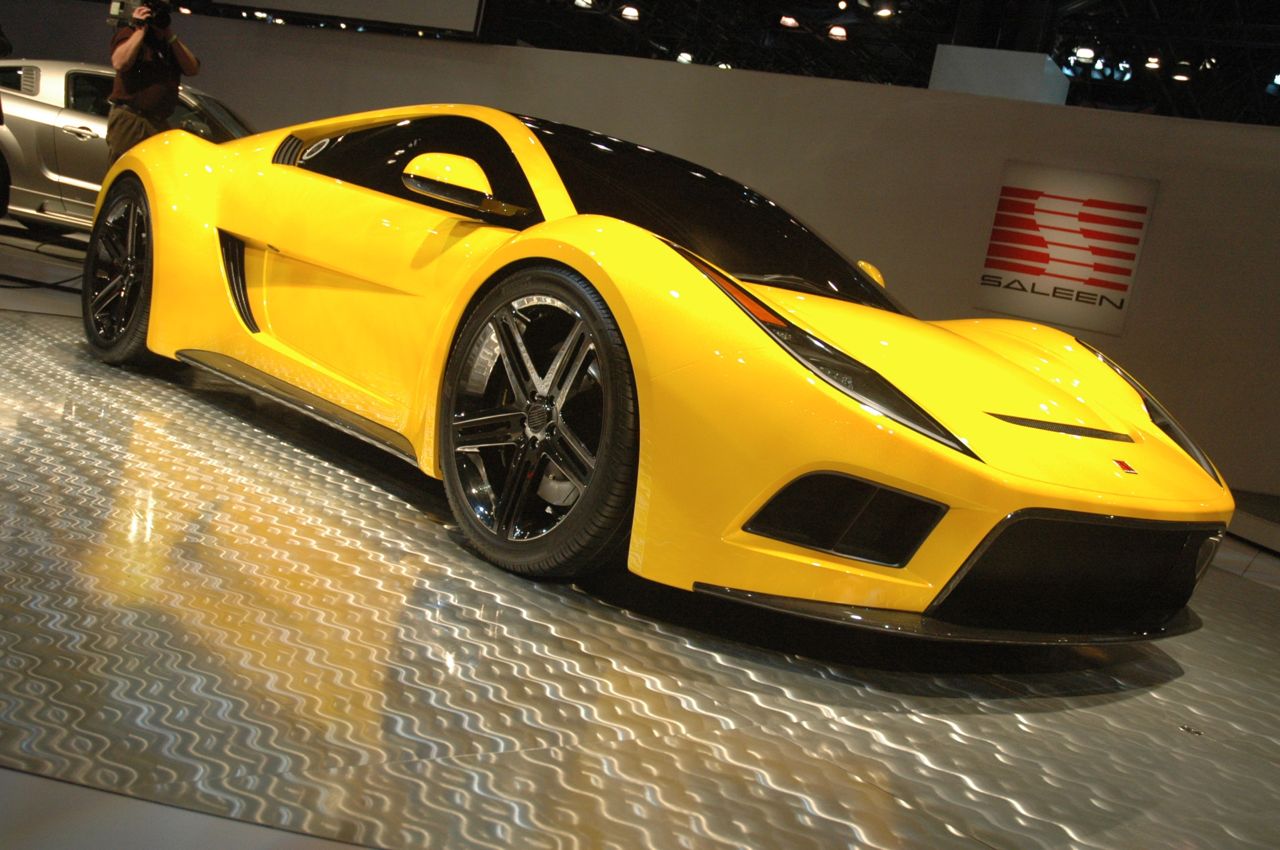
8. **Saleen S5s Raptor**
The Saleen S5s Raptor, an electrifying concept supercar, was meticulously engineered with the clear ambition of becoming a renowned figure in the automotive world. Imagined as a flagship vehicle for the esteemed Saleen brand, the Raptor was designed not just to captivate but to deliver an utterly impressive blend of performance and sophisticated style. It was a vehicle aimed directly at the discerning gaze of supercar enthusiasts, poised to carve out its own legend among the elite.
At the heart of the Raptor’s formidable design was a planned 5.0-liter V8 engine, a powerhouse promising to unleash a remarkable 650 horsepower. This immense power output was meticulously calculated to endow the car with exceptional speed and raw force, perfectly aligning with Saleen’s well-established reputation for crafting performance-oriented vehicles. Following the celebrated success of its predecessor, the Saleen S7, the Raptor was indeed positioned to be the brand’s next monumental leap forward, pushing the boundaries of what was considered achievable.
However, despite its profoundly promising specifications and the palpable excitement it generated, the Saleen S5s Raptor tragically never managed to transcend the concept stage. The company, grappling with significant financial difficulties, found itself in an untenable position, ultimately unable to channel the necessary resources to bring this groundbreaking vehicle into full production. What was envisioned as Saleen’s new flagship model, a beacon of automotive excellence, was ultimately abandoned due to insurmountable monetary challenges.
As the years advanced, the Saleen S5s Raptor regrettably joined the ranks of countless other visionary concept cars that, despite their brilliance, failed to ever grace a showroom floor. This powerful prototype, designed with the express intent of pushing the very limits of performance, became a poignant symbol of what could have been. Its unfortunate absence from the market stands as a stark and enduring reminder of how even the most meticulously planned and ambitious automotive projects can be irrevocably derailed by unforeseen financial constraints.
Car Model Information: 2023 Nissan Rogue SV
Name: Saleen S5S Raptor
Manufacturer: Saleen
Designer: ASC Creative Services,Warren, Michigan,Michigan
Class: Sports car
Layout: MR layout
Engine: Supercharger,V8 engine
Transmission: 6-speed manual
Wheelbase: 106.3 in
Abbr: on
Length: 175 in
Width: 78.6 in
Height: 46 in
Sp: us
Categories: Articles with short description, Concept cars, Rear mid-engine, rear-wheel-drive vehicles, Saleen vehicles, Short description is different from Wikidata
Summary: The Saleen S5S Raptor is an American prototype concept car developed and built by American high performance automotive company Saleen. It was first publicly unveiled on March 20, 2008 at the 2008 New York International Auto Show.
The S5S Raptor was designed in 2007 at the ASC design studio in Metro Detroit, and is intended to be equipped with a 5.0 L (310 cu in) supercharged Saleen engine (similar to that used on the 2008 S302E) which will yield 650 hp (659 PS; 485 kW). This will allow it to accelerate to 60 mph (97 km/h) in 3.2 seconds or less and complete the quarter-mile in 10.9 seconds. Expected retail price was US$185,000, roughly US$400,000 less than the S7.
Get more information about: Saleen S5S Raptor
Buying a high-performing used car >>>
Brand: Saleen Model: S5s Raptor
Price: $21,998 Mileage: 47,048 mi.

9. **Ford Shelby GR-1**
The Ford Shelby GR-1 emerged as a compelling concept car, meticulously conceived to carry forward the illustrious legacy of the legendary Ford GT. Its styling was a deliberate and artful homage to the iconic 1964 Shelby Daytona Coupe, masterfully blending a sense of heritage with a bold vision for the future. The design was not merely a retrospective nod but a significant leap forward, marrying breathtaking beauty with unparalleled performance, signaling the GR-1’s potential to become a new icon among supercars.
Powering the Shelby GR-1 was a formidable 6.4 L V10 engine, a colossal heart capable of generating an impressive 605 horsepower. This robust powertrain was engineered to deliver truly exceptional performance, positioning the car as a potent and serious contender within the fiercely competitive supercar market. Further enhancing its driving dynamics and appeal to dedicated car enthusiasts, the GR-1 also featured a sophisticated rear-wheel-drive powertrain, expertly coupled with a precision six-speed gearbox, ensuring an exhilarating and engaging experience behind the wheel.
Despite its undeniably promising design and immense power, the Ford Shelby GR-1 regrettably never advanced into mass production. Ford’s crucial decision was heavily influenced by the lessons learned from the Ford GT, which, despite generating sky-high expectations, ultimately fell short of its ambitious targets after only two years in production. This experience led the company to a cautious realization: launching another similar model could very well encounter the exact same formidable challenges.
After thoroughly considering these inherent risks and the prior market performance, Ford made the strategic, albeit difficult, decision to shelve the Shelby GR-1 concept. The GR-1, therefore, remains a powerful emblem of unfulfilled potential. With its stunning design and a truly powerful engine, it possessed all the quintessential ingredients for a monumental supercar success. Yet, due to pervasive concerns about market viability and the challenging performance of its spiritual predecessor, the Ford GT, the GR-1 was regrettably unable to transcend the concept stage, leaving enthusiasts to forever ponder what extraordinary achievements could have been.
Car Model Information: 2023 Nissan Rogue SV
Name: Ford Shelby GR-1
ModelYears: 2005
Production: 1 unit produced
Class: Concept Car
Engine: V10 engine
Designer: J Mays
Layout: FR layout
Doors: Butterfly doors
Transmission: manual transmission
Assembly: Wixom, Michigan
Wheelbase: 2540 mm
Abbr: on
Length: 4412 mm
Width: 1895 mm
Height: 1168 mm
Weight: 3900 lb
Categories: Articles with short description, Cars introduced in 2005, Commons category link is on Wikidata, Ford concept vehicles, Retro-style automobiles
Summary: The Ford Shelby GR-1 is a high performance concept car developed and manufactured by Ford. It was first introduced to the public at the 2004 Pebble Beach Concours d’Elegance as a clay model. A fully functional concept was revealed at the 2005 North American International Auto Show. The GR-1 was inspired by and bears resemblance to the Shelby Daytona.
Much of the GR-1 chassis and running gear is based on the Ford Shelby Cobra Concept, a modern version of the 1960s original Shelby Cobra, which was presented one year earlier at the 2004 North American International Auto Show. As with the Ford Shelby Cobra Concept, the GR-1 project was led by Manfred Rumpel and developed by Ford’s Advanced Product Creation group.
The GR-1 uses a 6.4L all-aluminum V10 engine and uses some components from the Ford GT. The GR-1 is officially rated at 605 hp (451 kW) and 501 lb⋅ft (679 N⋅m) of torque. It uses a 6-speed manual transmission. The GR-1 can accelerate from 0–60 mph (97 km/h) in 3.9 seconds and has a projected top speed of approximately 190 mph (306 km/h).
In early January 2019, Superformance announced they will be building a limited production line of the GR-1 concept, and will sport a 700bhp+ Supercharged V8 as Ford didn’t make any V10’s other than for their commercial truck fleet.
Get more information about: Ford Shelby GR-1
Buying a high-performing used car >>>
Brand: Ford Model: Shelby GR-1
Price: $21,998 Mileage: 47,048 mi.
Read more about: Beyond the Garage: 15 Vintage Cars That Are Secretly Skyrocketing in Value Right Now
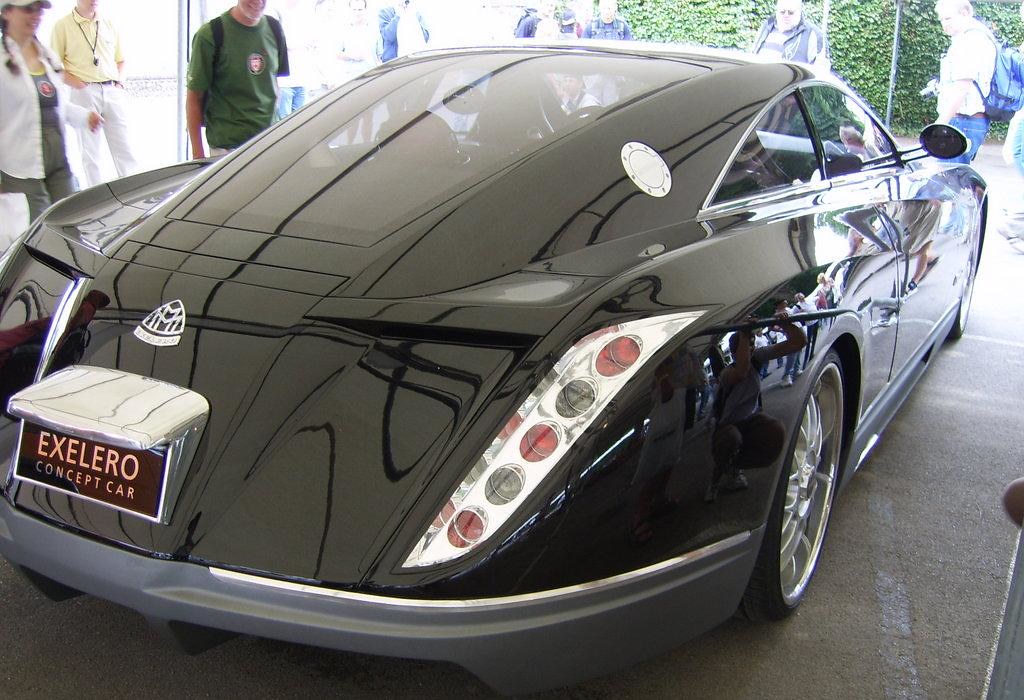
10. **Maybach Exelero**
The Maybach Exelero, a breathtaking high-performance concept car, first burst onto the scene in 2005, meticulously designed as a singular, one-off model. Its very creation was born from a specialized requirement: to rigorously test the new Carat Exelero tire range, a cutting-edge product from Fulda. With its array of extravagant features and audacious design, the Exelero was conceived to demonstrate the absolute pinnacle of tire capabilities while simultaneously showcasing the boundless potential for luxury and exhilarating performance within a supercar.
Commanding attention with its imposing physical presence, the Maybach Exelero stretched nearly 300 inches in length and tipped the scales at approximately 2.6 tons. These truly massive dimensions not only underscored its undeniable status as an ultra-luxury car but also amplified the vehicle’s unique and undeniably bold aesthetic presence. Yet, despite its colossal size, the Exelero made no compromises whatsoever on its performance credentials. This engineering marvel was capable of accelerating from a standstill to 60 mph in a blistering 4.4 seconds, an astonishing feat for a vehicle of its substantial weight.
Pushing the boundaries further, the Maybach Exelero boasted an impressive top speed of 218 mph, firmly cementing its reputation as a genuine powerhouse. Under its elegantly sculpted hood, the vehicle housed a massive V12 engine, a mechanical masterpiece that generated a colossal 690 horsepower and an equally staggering 752 lb-ft of torque. These extraordinary specifications collectively coalesced to create a car inherently capable of delivering truly exceptional performance, unequivocally making it a remarkably unparalleled vehicle for its era.
However, the Exelero’s astonishing specifications and bespoke nature came inextricably linked with an astronomical price tag. The sheer cost associated with producing such a high-performance, ultra-luxury vehicle was deemed extraordinarily expensive. When a comprehensive assessment of the car’s unique features and bespoke engineering was undertaken, it became unmistakably clear that the projected production cost would be utterly unjustifiable for any form of mass production. Consequently, the Maybach Exelero remained a singular, one-off concept, regrettably never making its triumphant transition into full production, despite its extraordinary design and groundbreaking performance capabilities.
Read more about: Whispers on Wheels: Unveiling the Private Car Choices of Hollywood’s Elite for Their Personal Lives
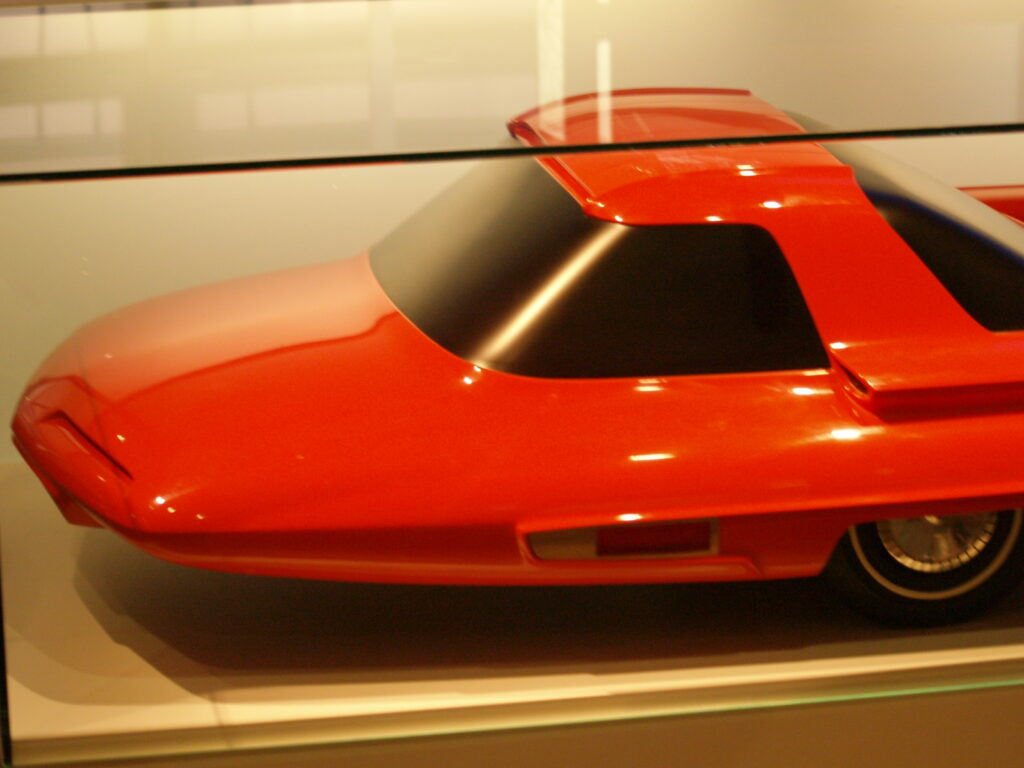
11. **Ford Nucleon**
The Ford Nucleon stands as a truly groundbreaking concept car, a bold vision from the 1950s that captivated the imagination of an entire generation. Its most revolutionary aspect was its audacious design to be powered by a small nuclear reactor, a concept that fundamentally challenged every prevailing notion of automotive propulsion. This visionary vehicle represented a profound leap into the unknown, embodying a future where personal transportation could operate on an entirely different energy paradigm.
This remarkable concept perfectly encapsulated the pervasive “era’s fascination with atomic energy,” a period marked by optimism and ambitious scientific advancement. The Nucleon was more than just a car; it was a physical manifestation of humanity’s burgeoning hope for a technologically advanced future, where nuclear power could be harnessed for civilian applications, extending even to the everyday automobile. It pushed the boundaries of what was considered plausible for personal transport, stimulating public discourse and scientific inquiry.
One of the Nucleon’s most tantalizing propositions was its potential to redefine long-distance travel. By proposing a car that “could travel thousands of miles without refueling,” Ford was not just envisioning a more efficient vehicle; they were imagining a world free from the constraints of frequent fuel stops and petroleum dependency. This capability would have offered unparalleled convenience and a radical form of energy independence for drivers, fundamentally reshaping road trips and daily commutes alike.
While it ultimately never progressed beyond the drawing board to mass production, the Ford Nucleon’s significance cannot be overstated. It served as a powerful testament to “the potential of alternative energy sources in automotive design,” opening dialogues about energy efficiency and sustainable power long before these topics became mainstream. The Nucleon thus remains a compelling and enduring “what if” in the expansive annals of transportation history, continually inspiring future generations to rethink traditional power sources.
Read more about: The Revival Circuit: 12 Forgotten Concepts That Changed the Automotive Industry
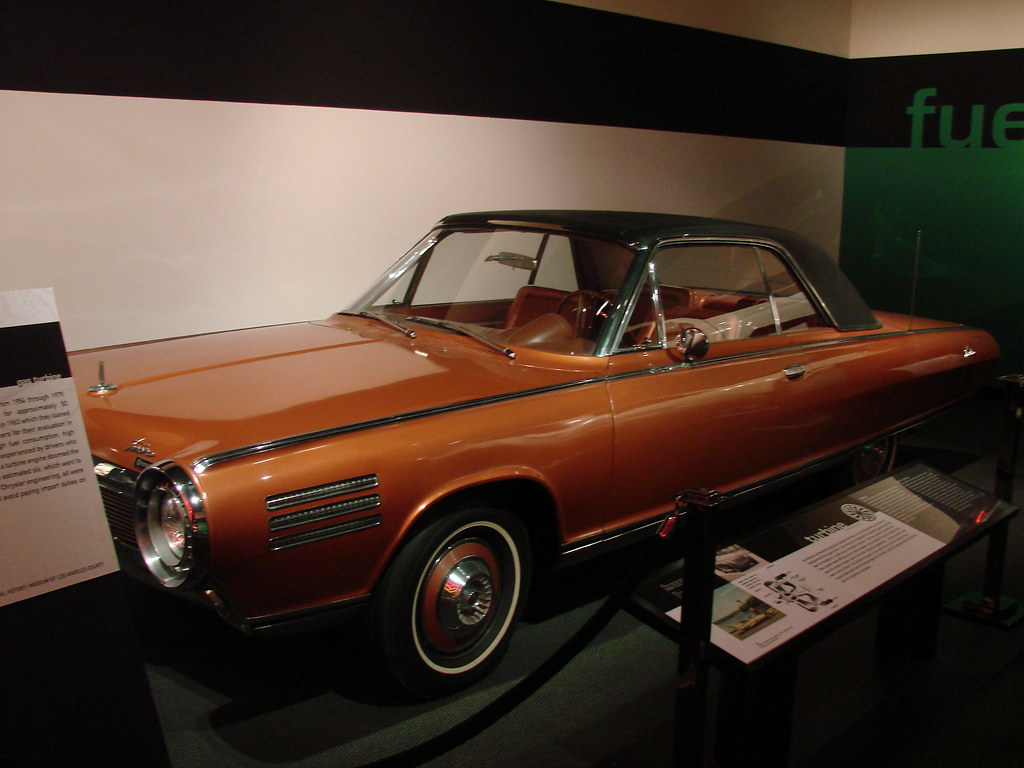
12. **Chrysler Turbine Car**
Chrysler’s Turbine Car marked an incredibly ambitious and pioneering project that unfolded during the dynamic 1960s, a decade synonymous with technological leaps. Its fundamental innovation lay in its radical departure from conventional automotive engineering, specifically in its utilization of a gas turbine engine rather than the ubiquitous, traditional internal combustion engine. This was not merely an incremental improvement but a wholesale reinvention of the automobile’s core power source.
The adoption of this advanced turbine technology brought with it a cascade of compelling promises for the driving experience. This revolutionary vehicle pledged “smoother operation,” offering a level of refinement and reduced vibration that was distinctively superior to its piston-powered contemporaries. Furthermore, it proudly championed “reduced emissions,” positioning itself as an environmentally forward-thinking solution long before such concerns dominated the automotive agenda. Adding to its allure, the Turbine Car showcased a remarkable versatility, boasting “the ability to run on various fuels,” from diesel and kerosene to even peanut oil, a flexibility unheard of at the time.
Despite its profound potential to fundamentally “revolutionize engine technology” and reshape the automotive landscape, the Chrysler Turbine Car program ultimately saw a tragically limited existence. “Only a handful were produced,” each one a meticulously crafted prototype allocated to a select group of public users for real-world testing. This experimental phase, while yielding valuable data, was a precursor to the program’s inevitable end.
Ultimately, the ambitious program was “eventually scrapped,” a decision driven primarily by insurmountable “cost and complexity issues.” The intricate manufacturing processes, specialized maintenance requirements, and the sheer financial investment necessary to bring turbine technology to a mass market proved too prohibitive. Thus, a truly innovative concept that promised to change the very essence of driving remained largely unrealized, a powerful illustration of how practical challenges can outweigh revolutionary potential.
Car Model Information: 2023 Nissan Rogue SV
Name: Chrysler Turbine Car
Assembly: Detroit,United States
Caption: Walter P. Chrysler Museum
Manufacturer: Chrysler Corporation
Production: 1963–1964,55 produced
Class: Concept car
BodyStyle: coupé
Layout: Front-engine, rear-wheel-drive layout
Engine: Chrysler turbine engines
Width: 72.9 in
Abbr: on
Height: 53.5 in
Wheelbase: 110 in
Length: 201.6 in
Weight: convert
Designer: Elwood Engel
Transmission: TorqueFlite
Categories: Articles with Internet Archive links, Articles with short description, Cars powered by gas turbines, Chrysler concept vehicles, Chrysler vehicles
Summary: The Chrysler Turbine Car is an experimental two-door hardtop coupe powered by a turbine engine and was manufactured by Chrysler from 1963 to 1964. Italian design studio Carrozzeria Ghia constructed the bodywork, and Chrysler completed the final assembly in Detroit. A total of 55 cars were manufactured: five prototypes and a limited run of fifty cars for a public user program. All have a signature metallic paint named “turbine bronze”, roughly the color of root beer. The car was styled by Elwood Engel and Chrysler studios. They featured power brakes, power steering, and a TorqueFlite transmission.
The Chrysler turbine engine program that produced the Turbine Car began during the late 1930s and created prototypes that completed long-distance trips in the 1950s and early 1960s. The A-831 engines that powered the Ghia-designed Turbine Car could operate on many fuels, required less maintenance, and lasted longer than conventional piston engines. However, they were much more expensive to produce.
After testing, Chrysler conducted a user program from October 1963 to January 1966 that involved 203 drivers in 133 cities in the United States cumulatively driving more than one million miles (1.6 million km). The program helped the company determine problems with the cars, notably with their complicated starting procedure, relatively unimpressive acceleration, and sub-par fuel economy and noise. The experience also revealed the advantages of the turbine engines, including their remarkable durability, smooth operation, and relatively modest maintenance requirements.
After the user program ended in 1966, Chrysler reclaimed the cars and destroyed all but nine; Chrysler kept two cars, six are displayed at museums in the United States, and one is in comedian Jay Leno’s private collection. Chrysler’s turbine engine program ended in 1979, mainly due to the failure of the engines to meet government emissions regulations, relatively poor fuel economy, and as a condition of receiving a government loan in 1979.
Get more information about: Chrysler Turbine Car
Buying a high-performing used car >>>
Brand: Chrysler Model: Turbine Car
Price: $21,998 Mileage: 47,048 mi.
Read more about: The Revival Circuit: 12 Forgotten Concepts That Changed the Automotive Industry
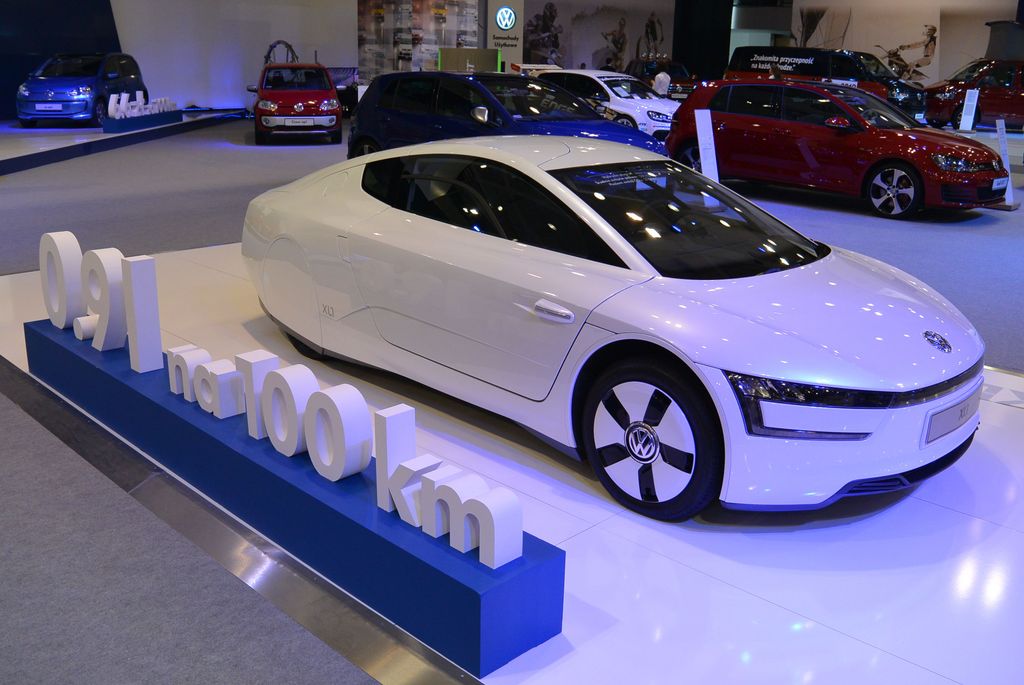
13. **Volkswagen XL1**
The Volkswagen XL1 emerged as a quintessential emblem of automotive ingenuity, specifically engineered as a hyper-efficient diesel-electric hybrid. This groundbreaking vehicle was meticulously designed with an singular, audacious goal: to achieve an astonishing fuel economy of “over 200 miles per gallon.” Such a benchmark positioned the XL1 not merely as an economical car but as a paradigm shifter, challenging existing notions of efficiency and environmental responsibility in the automotive sector.
Central to the XL1’s unparalleled efficiency was its uncompromising approach to design and construction. It featured a “sleek, aerodynamic design” that minimized drag, allowing it to cut through the air with remarkable ease. Complementing this, its “lightweight construction”—achieved through advanced materials and intelligent engineering—further reduced its energy demands. Collectively, these design principles allowed the XL1 to stand as a tangible representation of “a bold step towards ultra-efficient transportation,” showcasing what was truly possible when engineering was pushed to its limits.
Despite its formidable technical achievements and its clear advantages in fuel conservation, the XL1 experienced only “limited production.” While a small number of these remarkable vehicles did make it to the hands of consumers, the concept regrettably “never became a mainstream vehicle.” This outcome highlights the often-complex dynamics of bringing highly specialized, albeit revolutionary, vehicles to a broad market, where factors beyond pure technical merit often dictate commercial success.
The limited commercial footprint of the Volkswagen XL1 means that its immense “potential to drastically reduce fuel consumption and emissions” was never fully realized on a global scale. It remains a powerful symbol of what could have been: a vehicle that, if mass-produced, could have profoundly influenced environmental outcomes and consumer habits, underscoring the challenges of translating groundbreaking prototypes into widespread automotive reality, despite their undeniable capabilities.
Read more about: The Revival Circuit: 12 Forgotten Concepts That Changed the Automotive Industry

14. **Cadillac Sixteen**
The Cadillac Sixteen presented itself as a truly magnificent luxury sedan concept, a bold declaration of intent from a brand steeped in a legacy of opulence. It was conceived not just as another vehicle, but as a potential standard-bearer, an aspirational model that promised to redefine the very apex of automotive luxury. At its core, the car featured a truly “massive 16-cylinder engine,” a power plant of epic proportions capable of unleashing an astounding “1,000 horsepower.”
This formidable powerplant was seamlessly integrated with the characteristic elegance and “opulence Cadillac was known for,” creating a synergy of raw strength and refined luxury. The Cadillac Sixteen was more than just a car with a large engine; it was a statement, a meticulously crafted automotive masterpiece that possessed the innate capacity to profoundly elevate the brand’s standing. It had the genuine potential to set an entirely “new standard for luxury vehicles,” establishing a benchmark that other manufacturers would undoubtedly strive to emulate.
However, the grand vision for the Cadillac Sixteen ultimately clashed with pragmatic corporate decisions. Despite its overwhelming grandeur and the positive reception from enthusiasts and critics alike, the concept “was deemed too extravagant for production.” This pivotal choice likely stemmed from a confluence of factors, including prohibitive manufacturing costs, the immense complexity of its bespoke engine, and perhaps a strategic redirection of resources within Cadillac’s overarching business model.
Consequently, the cancellation of the Cadillac Sixteen left “a void in the ultra-luxury segment that it could have dominated.” This unfulfilled potential remains a poignant reminder of what could have been for Cadillac, a missed opportunity to cement an unrivaled position at the pinnacle of high-end automotive craftsmanship and performance. The Sixteen, therefore, stands as an enduring symbol of visionary design and engineering brilliance that, for various reasons, never quite made the leap from concept to a tangible market reality.
Read more about: Beyond the Sticker Price: 15 SUVs Where Annual Repair Bills Can Easily Surpass $1500
The journey through these 14 remarkable concept cars underscores a fundamental truth about the automotive industry: innovation often outpaces realization. From nuclear-powered visions to hyper-efficient hybrids and roaring V16 luxury sedans, these vehicles represent the audacious spirit of designers and engineers who dared to dream beyond the conventional. While they never graced our roads in mass production, their stories are far from failures; they are powerful narratives of ambition, technological exploration, and market challenges. These forgotten marvels continue to inspire, reminding us that even the most exciting ideas can remain confined to the drawing board, yet their legacy undeniably fuels the relentless pursuit of what’s possible in the cars of tomorrow. They stand as enduring testaments to the continuous evolution of automotive design and engineering, each a chapter in the compelling saga of vehicles that pushed boundaries but ultimately never found their way “Beyond the Showroom.”


